Fake news and wagon sheets
On Twitter today:

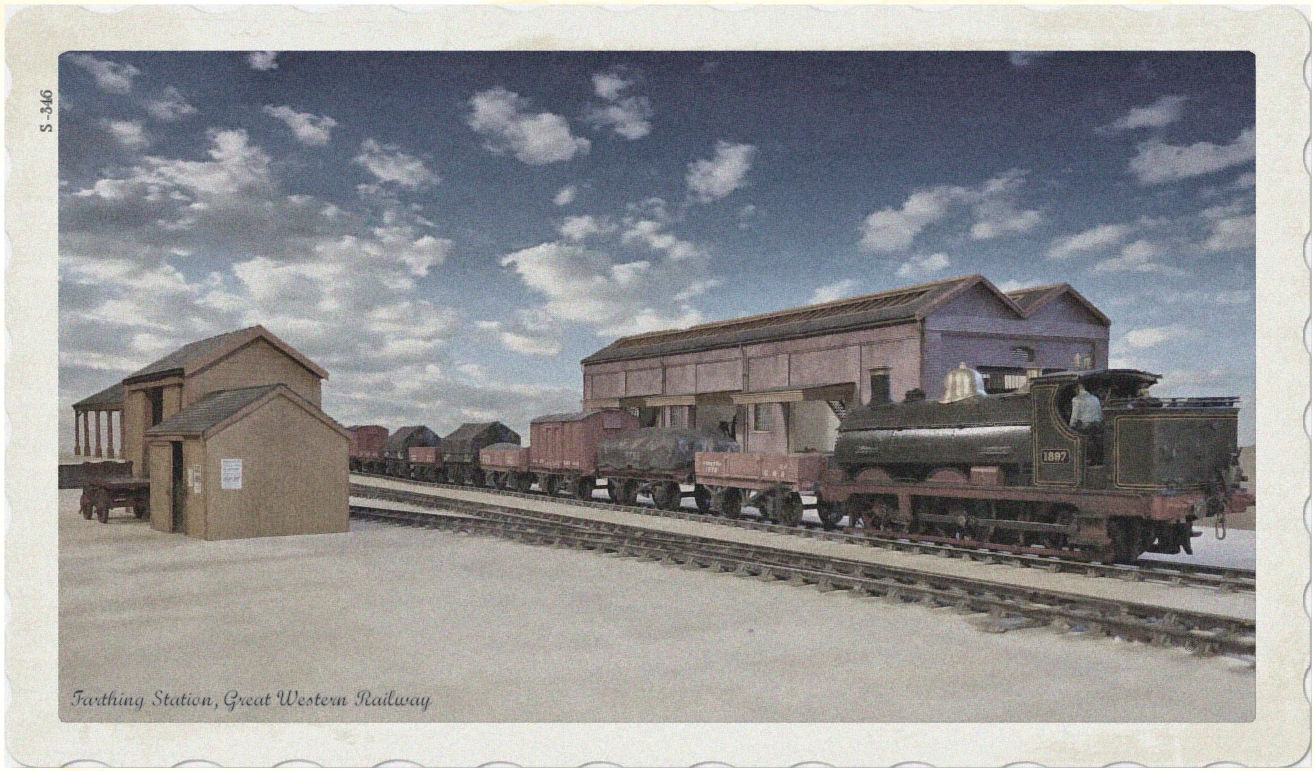




Anyway, enough fooling around. The wagon sheets (aka tarpaulins) seen in these photos are the preliminary results of experiments with aluminum foil. My original plan was to go the whole hog with cords and ropes etc, but as I started fitting sheets to my wagons I got cold feet. My wagons are nothing special but I like to look at them, and here I was covering them up!

So as a compromise I have decided - at least for the time being - to go for removable “shells” made from 0.05 mm aluminum foil and a paper skin, as seen above. The foil is self-supporting and maintains the shape, so the sheets do not need an actual load beneath them. This means I can add and remove them as I please. They can also be exchanged across different wagons of similar dimensions.
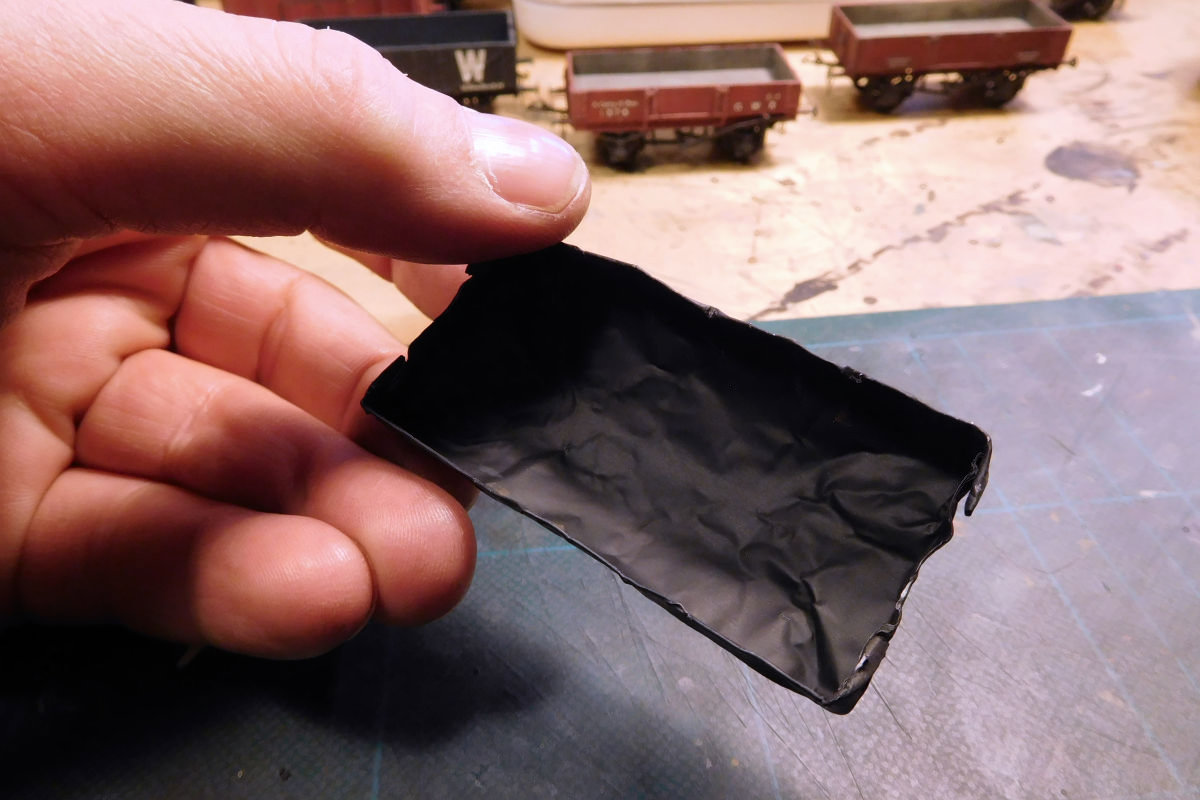
I initially used pre-primed foil for military modellers from Dio-Dump, but then found that I could buy the "raw" foil here in Denmark and prime it myself. Incidentally I also tried ordinary kitchen foil, which is thinner and therefore easier to fold, but it is also more fragile and less self-supporting than the 0,05 mm stuff.
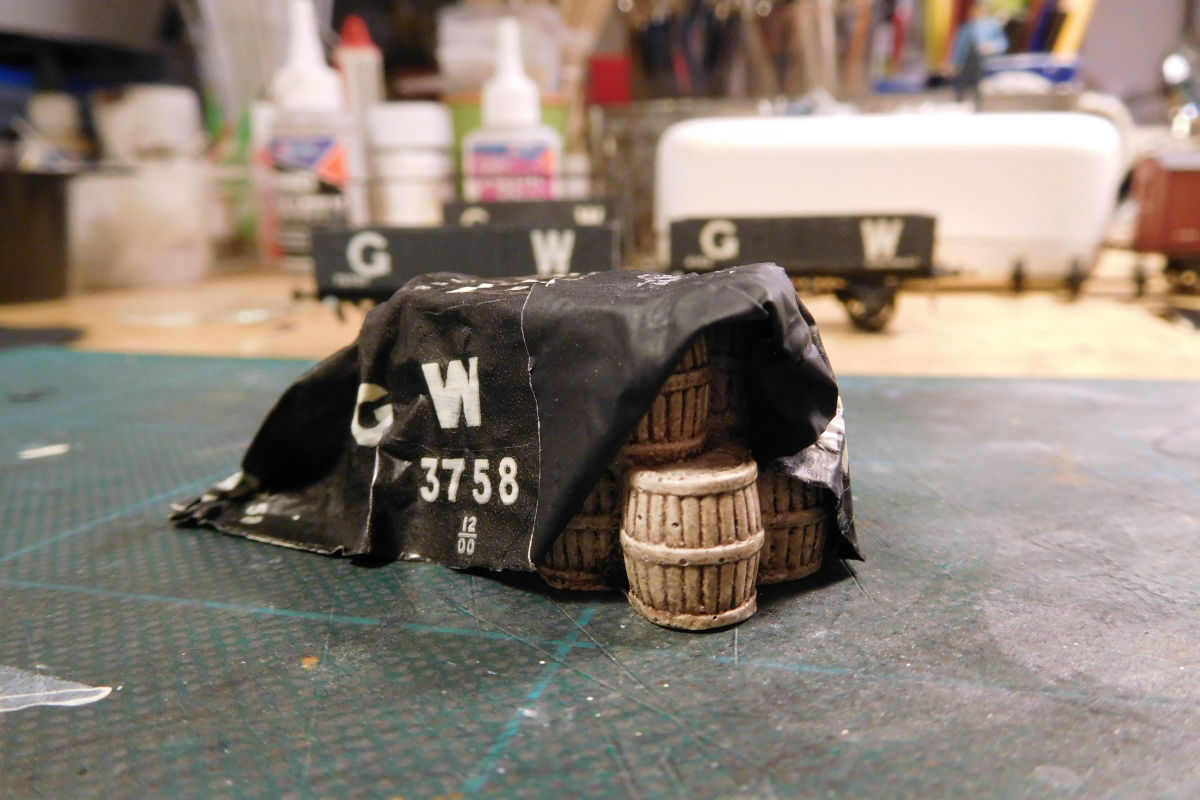
I first tried using transfers directly on the foil as seen here (details in my workbench thread), but making the transfers was a bit time-consuming and they proved difficult to weather.

So instead I printed the designs onto ordinary printer paper, gave them a coat of varnish and glued them to the foil with a thin layer of PVA. The designs are appropriate for the 1900s and were originally drawn up by Ian – thanks again Ian!

The sheets were then folded and “massaged” into shape, and given an oily but not too shiny look. This was done by applying 3-4 layers of matt varnish, brushed over with weathering powders when each coat was almost dry (hence the mess!). Perhaps this technique could also be used to give the popular ready-made sheets from Smiths a less “paper”-like look.

Photos show that in general the sheets were more “loose” than one might think. They also show that at the ends, the top was usually (but not always) folded down first, with the side flaps folded down outside that. The foil-plus-paper combo does add thickness to the sheets, so folding them naturally is not always easy and requires patience.
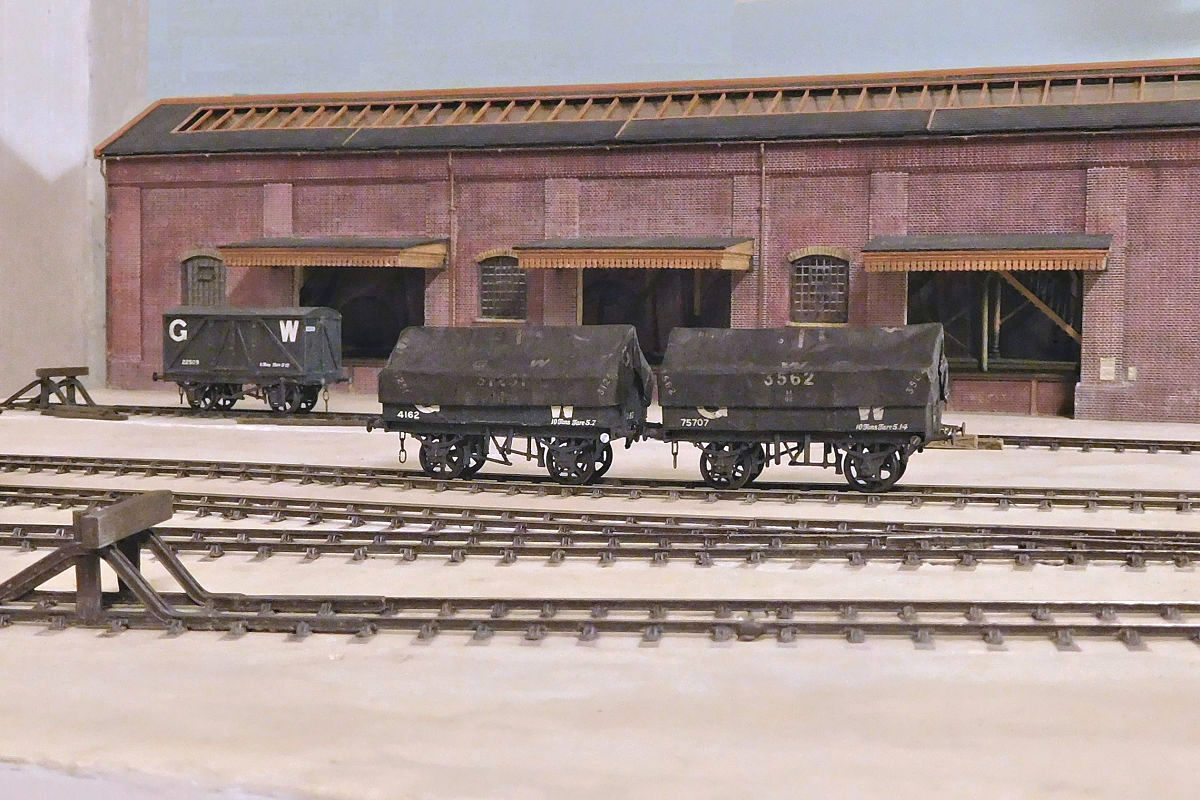
Above are the sheets fitted to two 5-plank Opens to diagram O4, the first GWR designs to feature sheet rails. The sheets look older than the wagons, I always overdo the weathering! The biggest compromise is of course that the sheets have no cords or ropes. For the time being I’m prepared to accept this in return for the ability to add and remove the sheets as I please. My excuse is that the sheets were normally tied down with short thin cords, which can be hard to see in prototype photos. Actual roping was only used on particularly tall or bulky loads.
Even so, the method is obviously a compromise and I may return to these experiments later to see what can be improved. For now I’m a bit tired of wagon sheets though. And politics. Plus, we still don't know the secrets of GWR wagon red. The livery instructions can't be found. I bet the Chinese have them. James, got a minute?
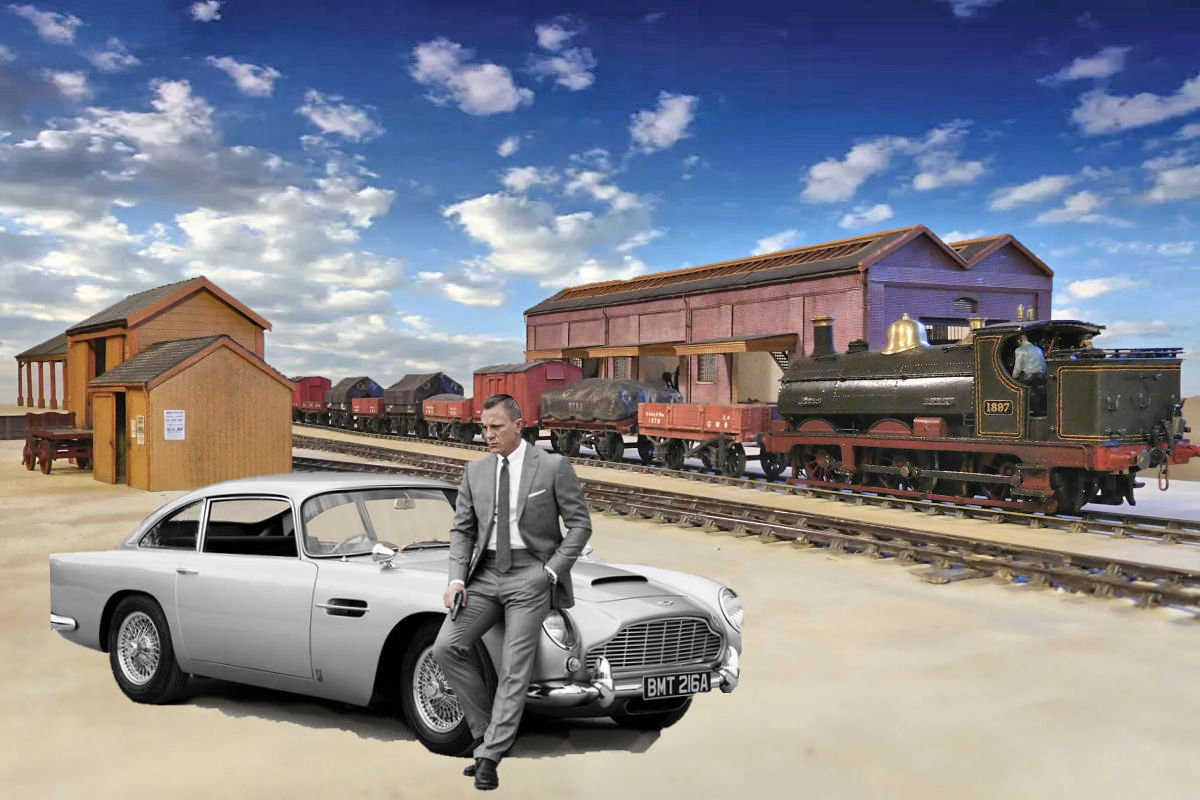
-
 22
22



16 Comments
Recommended Comments
Create an account or sign in to comment
You need to be a member in order to leave a comment
Create an account
Sign up for a new account in our community. It's easy!
Register a new accountSign in
Already have an account? Sign in here.
Sign In Now